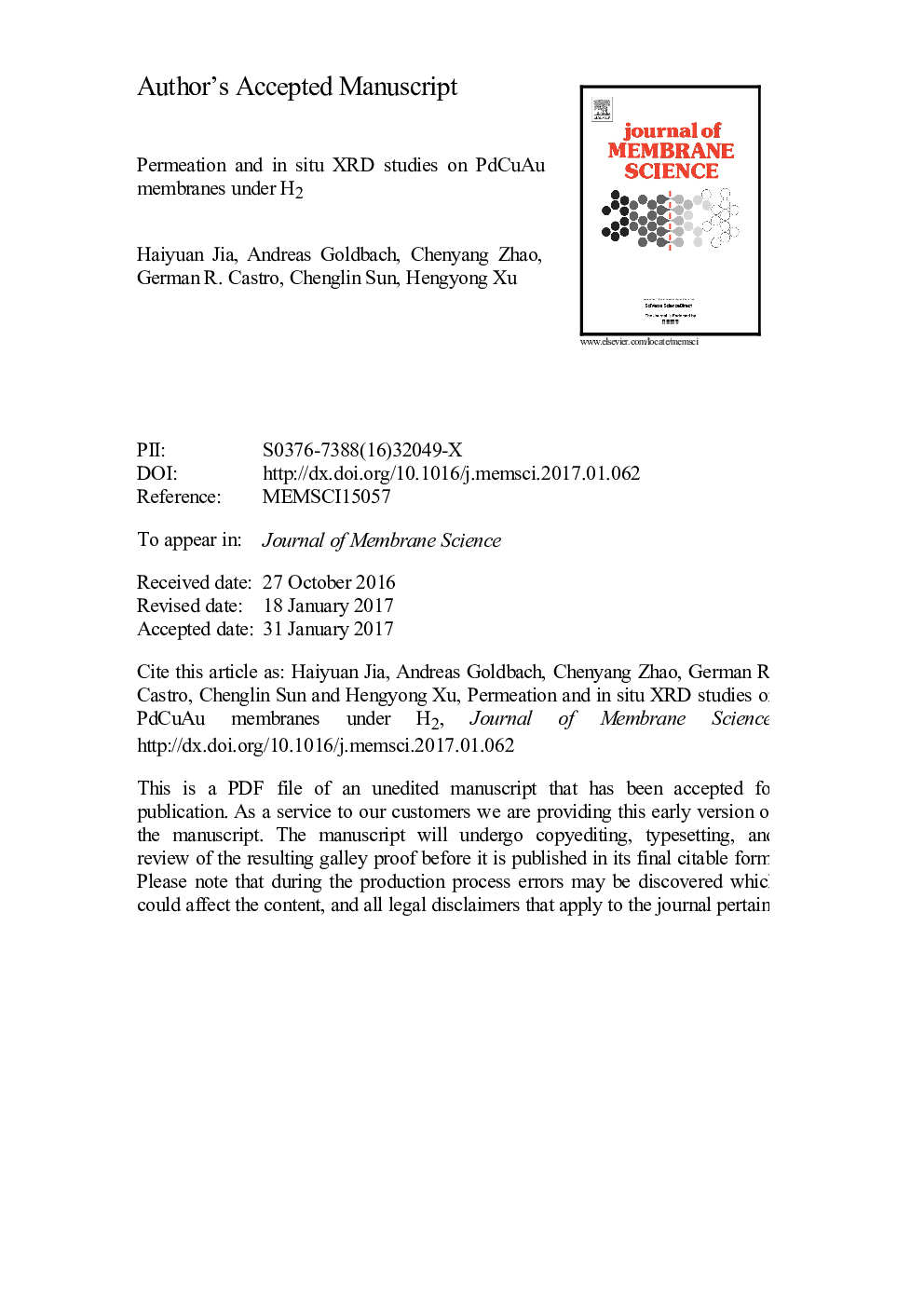| Article ID | Journal | Published Year | Pages | File Type |
|---|---|---|---|---|
| 4989283 | Journal of Membrane Science | 2017 | 39 Pages |
Abstract
PdCuAu membranes are interesting tools for H2 separation especially from sulfur contaminated mixtures. We have studied the preparation of such membranes on ceramic supports via electroless plating and examined their permeation behavior. Alloying of the separately deposited metals was time consuming at 500 °C under H2. Hydrogen permeability improved and the associated activation energy became smaller with increasing Au and decreasing Cu content of the alloys. The low-temperature α/β hydride miscibility gap was examined by in situ synchrotron radiation X-ray diffraction (SR-XRD) under H2 employing PdCuAu samples alloyed at 800 °C under N2. The gap narrowed with decreasing Pd amount and was reduced stronger by Au addition. This two-phase regime extended beyond 125 °C in hydrogenated Pd87Cu7Au6. Results from Cu-rich alloys indicate that it can be completely suppressed at room temperature through proper balance of Au and Cu in alloys containing less than 75% Pd. Hence, the risk of embrittlement due to formation of incommensurate α and β hydride phases can be largely mitigated and Au addition to PdCu alloys benefits the low-temperature stability of such membranes. Moreover, the SR-XRD experiments under H2 uncovered distinct alloys with very similar lattice parameters but differing hydrogen solubility in two Cu-rich samples demonstrating that such in situ studies are very useful for probing the homogeneity of multicomponent alloys.
Related Topics
Physical Sciences and Engineering
Chemical Engineering
Filtration and Separation
Authors
Haiyuan Jia, Andreas Goldbach, Chenyang Zhao, German R. Castro, Chenglin Sun, Hengyong Xu,
